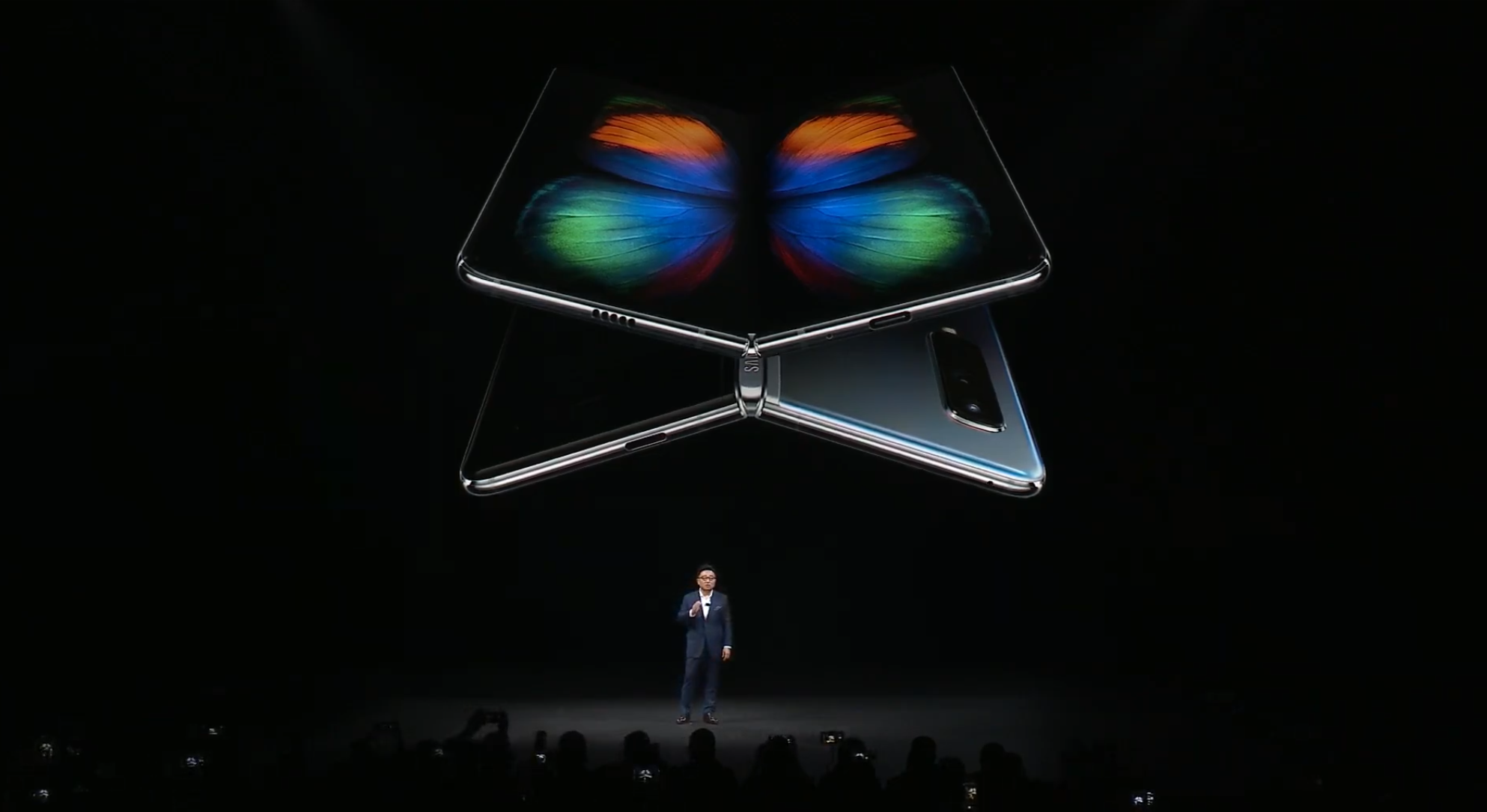- Samsung’s Galaxy Note helped set the standard for the large-screened smartphones we use today.
- But the Note emerged as smartphone adoption was accelerating, making Samsung one of the few companies offering a large-screened option as people began spending more time on mobile devices.
- In a slowing smartphone market, it’s unclear if Samsung’s $1980 Galaxy Fold will live up to the company’s vision of changing the category yet again.
Samsung launched its first Galaxy Note smartphone in 2011, an idea that probably seemed at least a bit outlandish at the time.
During an era in which the average smartphone screen was barely larger than four inches, if even that big at all, Samsung released a smartphone-tablet hybrid with a massive 5.3-inch screen and its own stylus. While most of the world marveled at how most smartphone makers were getting better at squeezing powerful components into tiny pocket-sized rectangles, Samsung was going bigger – less than a year after Steve Jobs famously said “no one’s going to buy” bigger-screen phones.
But fast forward to roughly eight years later, and it’s nearly impossible to find a phone smaller than 5.3 inches, and even Apple has followed suit. Although Samsung certainly wasn’t the only company making large-screened smartphones around 2011, its Note line can be credited with popularizing them in the United States, one of the largest smartphone markets in the world.
During its Unpacked event on Wednesday, Samsung’s Justin Denison took the stage to flaunt what the company is positioning as being the next big evolution of the smartphone: the Galaxy Fold. “With the Galaxy Fold, we’re creating a new dimension for your phone, and your life,” Denison said during the presentation. “We’re giving you a device that doesn’t just define a category, it defies category.”
As its name implies, the 4.6-inch smartphone unfolds into a tablet with a 7.3-inch screen. When in tablet mode, the device is capable of running three apps on the screen simultaneously - an evolution of the split-screen mode Samsung helped pioneer on smartphones with the Galaxy Note. The device contains two batteries, one on each side of the phone, that when combined offer 4,380 mAh of power. When it launches on April 26, it will have a sky-high starting price of $1,980, nearly double the cost of Samsung's new Galaxy S10.

But contributing to the Galaxy Note's success was a perfect storm of ideal circumstances. For starters, the timing was just right. Smartphone adoption was starting to take off several years after Apple launched its first iPhone in 2007. The Pew Research Center published its first standalone measure of smartphone ownership in 2011, finding that two in five cell phone users owned a smartphone as of May during that year. Before that, a Pew Research Center report from 2010 noted that cell phone usage had increased "dramatically" over the past decade as the app market began to flourish, finding that 43% of adult cell phone owners had apps in their phone.
As cellphones evolved from being just communication tools to the primary computers we use in everyday life, it made sense that there would be demand for phones with larger screens. And Samsung was among the first to offer that for mainstream smartphone buyers in the United States, setting the stage for the modern smartphone which is now considerably larger than 5.3 inches.
Now, Samsung is positioning the Galaxy Fold as being a game changer for smartphones. It's the first phone that can run three apps on the same screen at once, Samsung says. It's the first mobile device to support universal flash storage 3.0, meaning it should be able to read and write data faster than any other phone or tablet, Samsung also added on stage. "Whether it's open or closed, the Fold lets you use your favorite apps in completely new ways," Denison said during Samsung's keynote. "That's the magic of the Galaxy Fold, it's unlike anything you've ever seen."
But the smartphone landscape is much different in 2019. Worldwide smartphone sales are slowing as overall prices increase and customers are holding onto their current phones for longer periods of time. That means companies like Samsung will have to pose a compelling argument to convince consumers to upgrade, especially for a phone with a starting price of $1,980 - a price higher than many laptops.
To be sure, Samsung is well aware that its expensive new foldable device isn't for everyone. The word "luxury" came up repeatedly during Samsung's keynote when describing the Galaxy Fold. But then again, the Note wasn't initially for everyone either; Samsung has historically positioned the Note as a more premium option for power users to differentiate it from its flagship Galaxy S lineup. Yet here are in 2019, when phones that would have once been called "phablets" are now the norm.

Samsung did showcase some interesting use cases for the Galaxy Fold, such as how apps like Google Maps and Facebook can seamlessly transition between phone and tablet mode. But to make the Galaxy Fold worth its nearly $2,000 price, it will have to provide both a phone and tablet experience that's superior to any standalone devices available on the market - surely no easy feat even for a seasoned electronics maker like Samsung.
But even if the Galaxy Fold doesn't prove to be a hit, there's a chance it'll leave a mark on Samsung's product lineup in one way or another. After all, Samsung's first curved phone - the Galaxy Round - wasn't a blockbuster release, but it likely played some role in laying the foundation for the curved screens that have become standard on Samsung's flagship phones. As was the case with curved smartphones, it might just take a few generations for Samsung to get it right.

